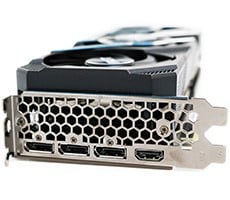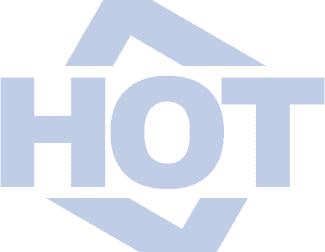
A few weeks back, AMD quietly released a couple of new graphics cards in the Radeon HD 5500 series. For a while there, starting with the Radeon HD 5870 in late September of last year, it seemed like AMD was releasing a new series of graphics cards aimed at different price points, practically every few weeks. Things slowed down a bit once the company had a complete top-to-bottom line-up of DX11 and Eyefinity capable cards from prices ranging from about $49 to $600, but obviously AMD wasn’t quite done beefing up the Radeon HD 5000 series.
The recently released Radeon HD 5500 series cards differed from their predecessors in only one meaningful way—they were equipped with GDDR5 memory. The original 5500 series cards sported GDDR3 or GDDR2 memory. The move to GDDR5 allowed AMD to crank the memory clock speed up a bit, which would have a positive impact on overall performance.
We’ve got both the Radeon HD 5550 and Radeon HD 5570 GDDR5 edition graphics cards in house and have taken them for a spin around the lab with an assortment of popular games and benchmarks. Take a look at the pages ahead to see just what a sub-$90 graphics card can get you these days…

The Radeon HD 5550 and 5570 GDDR5 Editions
 |
| Radeon HD 5500 Series |
| Specifications & Features |
|
627 million 40nm transistors
TeraScale 2 Unified Processing Architecture
320 (5550) / 400 (5570) Stream Processing Units
16 (5550) / 20 (5570) Texture Units
32 Z/Stencil ROP Units
8 Color ROP Units
DDR3/GDDR5 memory interface
PCI Express 2.1 x16 bus interface
DirectX 11 support
Shader Model 5.0
DirectCompute 11
Programmable hardware tessellation unit
Accelerated multi-threading
HDR texture compression
Order-independent transparency
OpenGL 3.2, 3.3, and 4.0 support
Image quality enhancement technology
Up to 24x multi-sample and super-sample anti-aliasing modes
Adaptive anti-aliasing
16x angle independent anisotropic texture filtering
128-bit floating point HDR rendering
ATI Eyefinity multi-display technology
Three independent display controllers
Drive three displays simultaneously with independent resolutions, refresh rates, color controls, and video overlays
Display grouping
Combine multiple displays to behave like a single large display
ATI Stream acceleration technology
OpenCL Support
DirectCompute 11
Accelerated video encoding, transcoding, and upscaling |
ATI CrossFireX multi-GPU technology
Dual GPU scaling
ATI Avivo HD Video & Display technology
UVD 2 dedicated video playback accelerator
Advanced post-processing and scaling8
Dynamic contrast enhancement and color correction
Brighter whites processing (Blue Stretch)
Independent video gamma control
Dynamic video range control
Support for H.264, VC-1, MPEG-2, and Adobe Flash
Dual-stream 1080p playback support
DXVA 1.0 & 2.0 support
Integrated dual-link DVI output with HDCP
Max resolution: 2560x1600
Integrated DisplayPort output
Max resolution: 2560x1600
Integrated HDMI 1.3 output with Deep Color, xvYCC wide gamut support, and high bit-rate audio
Max resolution: 1920x1200
Integrated VGA output
Max resolution: 2048x1536
3D stereoscopic display/glasses support
Integrated HD audio controller
Output protected high bit rate 7.1 channel surround sound over HDMI with no additional cables required
Supports AC-3, AAC, Dolby TrueHD and DTS Master Audio formats
ATI PowerPlay power management technology
Dynamic power management with low power idle state
Ultra-low power state support for multi-GPU configurations
Certified drivers for Windows 7, Windows Vista, and Windows XP |

The Radeon HD 5500 Series GDDR5 editions have the exact same feature set as their GDDR3/2 counterparts. The GPU configurations on GDDR5 cards are identical to those of the original GDDR3/2 cards. Also note, the Radeon HD 5550 and Radeon HD 5570 sport the same GPU, hence the similar features. The only differences between the two cards are that the higher-end Radeon HD 5570 has more stream processing units and texture units. Whereas the Radeon HD 5570 has 400 stream processors and 20 texture units, the Radeon HD 5550 has 320 and 16.
![]()






